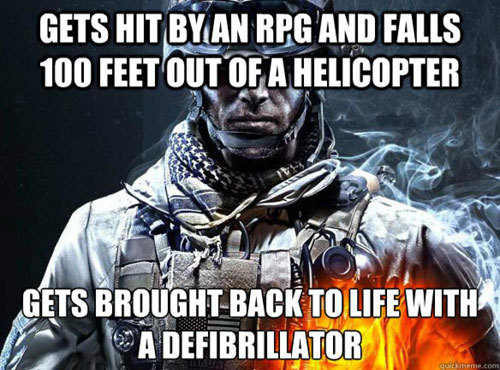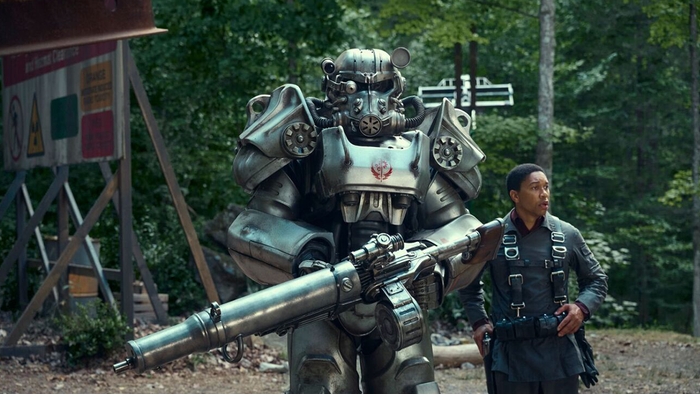
Featured Blog | This community-written post highlights the best of what the game industry has to offer. Read more like it on the Game Developer Blogs.
Suspension of disbelief in video games and an easy step towards feminism
In video game development, it's important not to let misguided concepts of realism get in the way of making things fun (and equal).

Pretty much from the get-go, video games have asked us to suspend our disbelief over what the hero can do. From Mario being able to standing jump many times his own height, to Guybrush Threepwood being able to fit an entire dog in his pants without anyone noticing (that happens, no joke), to the cops suddenly forgetting that you murdered a city if you make it back to your apartment in GTA. It’s part of what makes the game a game. Being able to bend the rules a little (or a lot) makes it fun. We use art and entertainment to escape reality (or at least circumvent it). Appropriate amounts of suspended disbelief are part of the experience. See also: movies, TV, comic books, novels, fan fiction, etc.
In gaming, the most common suspension of disbelief is the skill/luck of the hero, particularly in fighting games. The IRL record number of direct kills by one person for the entire human race is 505 (from a Finnish Sniper in WWII), and this largely because the Russians had some really bad tactics at the start of that war. In video game terms, it’s one level of Left 4 Dead. In most combat-oriented games, the protagonist defeats or kills a small army of enemies, often with little more training than his opponents should have (and sometimes less). Look at FarCry 3. You go from spoiled, rich-kid crybaby to killing two islands worth of armed mercenaries (and several tigers and sharks) in a matter of days. And we didn’t flip out about it because, hey, it was fun.
And on the defensive side, how many bullet wounds do our favorite heroes shake off? 10? 20? 50? Hundreds? In real life, shaking off one bullet is a big deal. You might even be able to survive 20 with proper medical care, assuming none of the shots are instantly fatal. But you certainly can’t get a shot a bunch, walk past a first aid kit, and then get shot some more. We accept that our heroes can take abnormally high abuse (or recover quickly) because otherwise the game stops being fun. Obviously, there are some points where things get a little too ridiculous that developers need to avoid, but players generally WANT to suspend their disbelief so they can escape from the crappy realities of real life.

When we started designing Aberford, we had to ask ourselves “How do we make it believable that these 50s housewives are fighting these zombies?”. We knew that if we didn’t give them some edge, the game would catch flak for being “unrealistic”. (For balance, we also give any of the male characters who survive the first three chapters an edge as well). So we made Peggy more athletic, Doris stronger, Betty more skilled, and Sylvia more ruthless than an average person, giving them a reason to be able to do all the heroics Aberford calls for.
But we really shouldn’t have needed to. Very modest amounts of research will reveal that a ‘50s housewife is a serious customer, far more serious than most of the jokers who survive in your typical zombie fare. From the growing up during the hard years of the depression and WWII, to the inordinately physical nature of pre-appliance housework, the average ‘50s housewife in her prime could have soundly beaten any of us without breaking a sweat. (And I KNOW you all think you’d survive a zombie apocalypse with flying colors).
In the interest of both equality and accuracy, the main thing that gets people killed/zombified in Aberford isn’t a physical inability to fight a zombie one-on-one. It’s actually the mental barrier, the hesitation, the aversion to hurting someone. The zombies look like people (and not corpses), so most of the characters are reluctant to really cut loose. Or they’ve been ingrained from childhood that they can’t fight back (as is the case with oppressed people). And when you’re attacked by fast, vicious zombies, that split second delay will be the death of you. So our heroines are all women who know they can fight back and do. And that’s their biggest edge. If oppression is about making people believe they can’t do something, empowerment is about making people believe that they can.
Gender equality in game design only takes a willingness to suspend our disbelief for female characters as much as we are for male characters. Feminism in game design is that short, easy step to realizing it’s currently not how things are and that we should be doing something about it.
Read more about:
Featured BlogsAbout the Author(s)
You May Also Like







